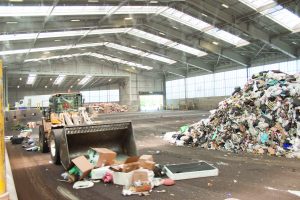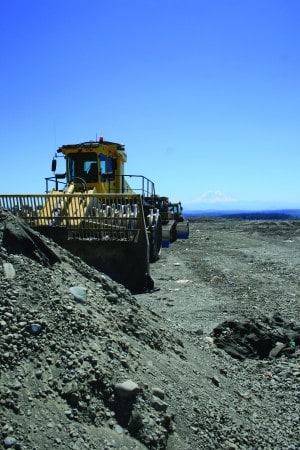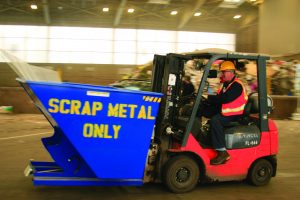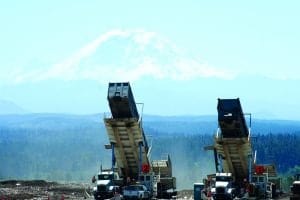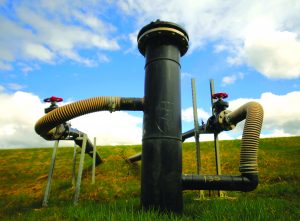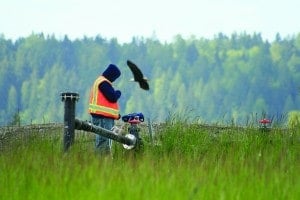Through education, policy and partnerships, King County’s Solid Waste Division is working to achieve its goals of zero waste and a 70 percent recycling rate by focusing on moving from traditional solid waste management to waste prevention, waste disposal and resource recovery.
When King County, WA’s Solid Waste Division first began providing garbage and transfer services in the 1960s, solid waste management was very different. Climate change and recycling were practically unheard of, the population was small, and garbage collection and disposal were relatively simple. Today, solid waste management in Western Washington and across the United States is in a much different place and, like most solid waste organizations, the division has recognized it must adjust.
At nearly 2,000 square miles, the division’s service area is massive. It takes a dedicated team of more than 400 full-time employees operating and maintaining eight transfer stations, two rural drop boxes, and the Cedar Hills Regional Landfill to provide transfer and disposal services to 1.4 million residents. The service area is also incredibly diverse, ranging from urban to suburban to rural, and includes residents who speak many languages, have different income levels, and come from different backgrounds. With the exception of the cities of Seattle and Milton, 37 cities and unincorporated areas of the county rely on the division to properly transfer and dispose of more than 850,000 tons of solid waste each year. “Every day presents a new challenge in how we responsibly handle solid waste, turn waste into resources and encourage people to recycle, but knowing that we are making a positive difference motivates us to do more,” Division Director Pat McLaughlin says. “Our region has long been viewed as a leader in solid waste management, but the times are changing and we continue to challenge ourselves to live up to that reputation.”
Some of the challenges that the division is facing include maximizing the lifespan of the Cedar Hills Regional Landfill, increasing recycling and diversion efforts and ensuring a sustainable rate model is in place to cover system expenses. Despite these challenges the division is currently facing, McLaughlin said they couldn’t have come at a better time because today the division is strong and committed to redeveloping an enduring business model that is characterized by value and environmental excellence. This has set the stage for a reorganization of the division, its mission and its goals.
Staying Relevant
It’s all about staying relevant, McLaughlin said. Yes, the division has set lofty goals, such as zero waste of resources by 2030 and 70 percent recycling by 2020, but where some may see that as impossible, McLaughlin believes it’s necessary to ensure the future of the division. “We’re fine today,” he says, “We are financially sound, have a guaranteed waste stream with most of our city partners until 2040, and a talented and dedicated team, but that doesn’t mean ‘business as usual’ is the right way to go. I’ve been a part of organizations that were anchored in one business model, who didn’t listen to their customers, and who were resistant to continuous improvement. The end result was too often the same: their losses were deep and difficult to recover from, and it sometimes resulted in the demise of the business. To me, that is 100 percent avoidable if you stay relevant.”
In order to stay relevant, McLaughlin decided the division needed to expand its focus from traditional solid waste management to three new “product families”—waste prevention, waste disposal and resource recovery.
Waste Prevention
Waste prevention is all about avoiding the creation of waste at the earliest stage of the supply chain and influencing the downstream material users to be environmentally wise when they are done with the materials. Although today and for the foreseeable future, it is necessary to provide recycling options at the division facilities, this last ditch safety net is expensive and does not capture all the resource before they are buried in the landfill. Consistent with the division’s long-standing commitment to collaboration and innovation, McLaughlin said that work will focus on education, policy and partnerships to allow the division to achieve its goals of a zero waste of resources and a 70 percent recycling rate to conserve room in the landfill. “Our recycling programs are award winning, and I consider that one of our major achievements,” McLaughlin says. “If we can help our customers understand that there are better options for certain materials than carting them to the landfill, then we come closer to reaching our goals.”
With King County’s diverse population, it takes a team of creative individuals to effectively communicate the importance of waste prevention. In collaboration with its diverse community, the division created “Recicla Mas, Es Facilisimo (Recycle More It’s Easy)” a curbside recycling education program that works to engage the Latino/Hispanic community to increase their awareness about garbage, recycling, and composting. “As part of King County’s Equity and Social Justice Initiative, requiring engagement with audiences who speak other languages than English as their primary language, we print our publications in both English and Spanish, and sometimes other languages, but Recicla Mas takes that one step farther with the Facilitadores de Reciclaje. The Facilitators of Recycling are our community partners who teach area residents recycling basics,” McLaughlin explains. Entering its fifth year, the Recicla Mas program has developed a Web site, education materials and recruited and trained the Facilitadores partners. For the past two years, the program has also partnered with local Hispanic/Latino media to provide TV, radio, and print advertisements, and, in 2014, reached more than 1,600 Hispanic/Latino community members at local events and gatherings.
Waste prevention and recycling education doesn’t stop there. The “Food: Too Good to Waste” program takes advantage of King County’s numerous farmers markets to promote buying local food and proper composting techniques. The division’s own Program Manager, Tom Watson, “EcoConsumer”, takes recycling and waste prevention to the social media world, and is a trusted resource for residents interested in learning how they can consume as little as possible and reduce, reuse or recycle everyday items that would otherwise end up in the garbage can. The EcoConsumer Twitter account has more than 6,000 followers, and its program manager has regular EcoConsumer segments on the local news, and takes his message to numerous group presentations across King County. “The EcoConsumer public outreach program promotes division values—including waste prevention, equity and social justice, and more—by connecting directly with the public and media and answering their questions,” says Watson.
These and other division programs, McLaughlin says, help the community understand how one small, green action can have a far-reaching affect across the entire region. “The list of programs is long and diverse,” McLaughlin says. “One program isn’t going to get us to 70 percent recycling, but the combination of all these different, unique programs helps us spread the word about the importance of recycling, and how the community can help us achieve these important environmental goals.”
Resource Recovery
Resource recovery is not a new idea for the division, but it has become a major component to the division’s new business model. A 2011 waste characterization study conducted by Cascadia Consulting Group showed that more than 78 percent of the waste disposed at county facilities could potentially be recycled. That study, in conjunction with others, caused the division to begin looking at ways it could increase diversion at its transfer stations. “Even with well-established curbside recycling programs, it was evident that large amounts of recyclables were being thrown away by commercial and self-haul customers,” says Eric Johnson, Resource Recovery Program/Project Manager.
In April of 2014, the division implemented a material recovery pilot at its Shoreline Recycling and Transfer Station. The main goal of the pilot was for a collaborative team of transfer station personnel—managers, supervisors, transfer station operators and scale operators—to develop and standardize material recovery procedures. They did this by testing, practicing and putting mixed waste sorting methods into operations at transfer stations to increase waste diversion from the Cedar Hills Landfill, promote environmentally sound material management practices and contribute to the 70 percent recycling goal. “The Shoreline station was chosen to lead the pilot efforts because that station was leading all stations in the amount of recycling tons collected,” Johnson says. “The station had a well-established recycling culture, but it also had staff members who were advocates for recycling and who showed a willingness to pilot material recovery efforts.”
Materials targeted for recovery included cardboard, metal and clean wood. All three materials are still prevalent in the waste stream and all have well established recycling markets with both cardboard and metal having revenue-generating potential. Material recovery efforts went about removing wood, metal, and cardboard with two different but focused efforts. The first approach targeted dry waste from industrial/commercial customers delivered directly onto the tipping floor. Material rich loads were targeted by front load equipment operators who segregated material into an area to be sorted by excavators. The second approach targets self-haul customers by encourage them to sort their mixed waste when unloading by placing their metal, wood and cardboard in bins that are placed in the self-haul unloading areas. Both efforts have proven to be effective when used in combination with one another. “The results have been astonishing,” McLaughlin says. “In the first three months of the program, recycling was improved at the Shoreline Recycling and Transfer Station by nearly 250 percent. A year later, those results continue.”
Waste Disposal
Even with the push to get to zero waste of resources and a 70 percent recycling rate, the division remains committed to exemplary waste disposal services and facilities. The Bow Lake Recycling and Transfer Station, McLaughlin says, is one of the division’s newer facilities that highlights the division’s commitments to environmental stewardship, fiscal responsibility and customer service. “That facility was completed on time and under budget, and has been recognized as one of the premier recycling and transfer stations in our region.
The facility boasts a Leadership in Energy and Environmental Design (LEED) platinum rating, the highest rating available, and was awarded “Green Project of the Year” by the Engineering News Record. The facility is designed to use as much as 60 percent less energy than a conventional building and employs energy conserving strategies such as daylight panels to reduce energy use. Other design features that conserve resources, such as the use of recycled products—from steel to asphalt to concrete—are evident throughout the facility.
Located in eastern King County, the Cedar Hills Regional Landfill is one of the nation’s best-run landfills. The landfill is about 920 acres, the equivalent of nearly 700 football fields, and operates 362 days a year. The landfill also contains an onsite gas-to-energy plant where landfill gas is transported via pipeline to an onsite processing facility that cleans the gas and generates renewable natural gas, which is in turn sold to transportation companies in Tacoma, WA and California. Capable of generating enough energy to support nearly 30,000 homes, landfill gas replaces millions of gallons of diesel fuel each year and supports King’s County commitment to reducing greenhouse gas emissions and offsetting the effects of climate change.
Currently, the landfill is slated to reach capacity in 2030, but McLaughlin hopes the division’s expanded focus on waste prevention and resource recovery will extend the life of the landfill. “Landfilling our waste remains the most cost-effective and environmentally sound option for us,” McLaughlin says. “The longer we can extend its life, the more time we will have to explore other disposal methods and technology. With our interlocal agreements with most city partners extending to 2040, the hope is to keep the landfill active until at least that year. As we continue to evaluate other disposal options, we continue to work with partners, stakeholders and the community to keep them informed of the costs and benefits of all the options.”
Internal Operations
The cultural value that says “employees are valued, engaged, and working toward a common purpose” guides the division’s internal operations. All employees are encouraged to participate in biannual all-hands meetings that provide opportunities to learn more about what is happening in the division, voice concerns and exchange ideas. Employees are leading and participating in initiatives to improve how the division does its work and how people work together. It is important to McLaughlin that all employees understand and actively contribute to the success of equity and social justice within the division. An employee-led equity and social justice team supports both external and internal efforts along with training for all employees and is focused on improving the diversity of the workforce.
Another area of focus is employee safety. An employee led safety board supports those efforts along with a safety hotline, training for all employees on incident reporting and personal protective equipment, and a comprehensive reporting program that targets areas for improvement.
Looking Ahead
McLaughlin believes that there is no single achievement greater than all the others. For him, it’s all about having a well-integrated system that works together toward a common purpose. “We’re just constantly and actively seeking to understand the current times, and question how we can achieve our vision while proving to be relevant to our customers,” he says. “Though we’re not planning on doing this completely on our own, we also know we can’t hope or wait for someone else to solve this problem. Waste prevention, resource recovery and waste disposal are industry-wide issues, and we know success can only be achieved through a collaborative process where we all share the risks and reap the rewards.”
McLaughlin is ever optimistic that the future is bright for his organization and the solid waste industry. “We enjoy strong partnerships, serve wonderful communities, and have the most talented and dedicated employees we could hope for,” McLaughlin concluded. “This is a winning combination that will enable us to deliver a value-based business model that ensures our collective future.”
For more information, contact Pat D. McLaughlin, Solid Waste Division Director, at [email protected].
